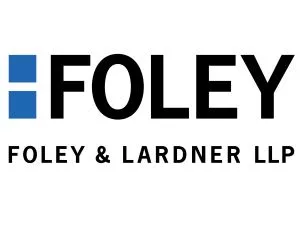- within Immigration topic(s)
- within Coronavirus (COVID-19), Government and Public Sector topic(s)
- with readers working within the Banking & Credit industries
Following the issuance of President Trump's Presidential Proclamation on September 19, 2025, imposing a $100,000 fee on H-1B visa workers seeking entry to the United States, three key federal agencies have released clarifying guidance to address widespread questions from employers, beneficiaries, and immigration practitioners. The U.S. Citizenship and Immigration Services (USCIS), U.S. Customs and Border Protection (CBP) found at: Twitter/X and Memo, and U.S. Department of State (DOS) have provided targeted clarifications regarding the proclamation's scope and application, effective September 21, 2025.
Scope of Application: Who Is Subject to the Fee
The agency guidance establishes clear distinctions between affected and unaffected H-1B workers based on their current location and petition filing dates.
H-1B Workers Outside the United States
The $100,000 fee applies to individuals seeking initial admission or readmission to the U.S. in H-1B status based on petitions filed with USCIS at or after 12:01 a.m. EDT on September 21, 2025. This encompasses:
- Workers applying for new H-1B visas at U.S. consulates or embassies based on approved petitions filed on or after the effective date
- Any H-1B beneficiary physically outside the country seeking entry under a newly filed petition
H-1B Workers Currently in the United States
Individuals presently in the U.S. with valid H-1B status remain unaffected by the fee or entry restrictions. These workers may continue to extend their stay, amend existing petitions, and maintain their current status without triggering the new requirements.
Key Policy Parameters
Petition Filing Date Determinative
The proclamation's application hinges on the USCIS filing date of the underlying H-1B petition. Petitions submitted before September 21, 2025, remain exempt from the fee requirement, even if the beneficiary seeks entry after the effective date. The guidance confirms this applies to the upcoming 2026 H-1B lottery and all subsequent petition filings.
Extensions and Amendments Excluded
Current agency guidance confirms that H-1B renewals and extensions for workers remaining in the U.S. do not trigger the fee requirement. However, the treatment of change-of-employer petitions remains unclear, with agencies providing conflicting or incomplete guidance on this critical issue.
Outstanding Implementation Questions
Despite the initial clarifications, significant procedural and operational questions remain unanswered, creating uncertainty for practitioners and employers navigating the new requirements. Critical areas requiring additional agency guidance include:
Petition Processing and Adjudication
- Whether consular posts will issue visas for renewals, change-of-employer petitions, amended petitions, cap-exempt petitions, or H-1B1 applications filed after September 21, 2025, without fee payment
- The adjudication status of extension applications, including change-of-employer and amended petitions for individuals in lawful H-1B status, or change-of-status applications filed on or after the effective date
Cap-Exempt Categories
- Whether employers filing cap-exempt H-1B petitions will be subject to the entry ban and fee requirement, given the proclamation's specific references to the lottery system
Administrative and Procedural Mechanics
- The process and acceptable methods for payment of the $100,000 fee
- Whether H-4 dependent family members are subject to similar fee requirements
- Documentation requirements for H-1B visa holders to demonstrate fee payment compliance to CBP officers at ports of entry
Unresolved Issues Requiring Further Clarification
Change of Employer Petitions
While USCIS indicates the fee applies to "any new H-1B visa petitions," it specifically excludes renewals from the fee requirement. DOS and CBP guidance doesf not directly address change-of-employer scenarios, creating uncertainty for employers and practitioners navigating mid-employment transfers.
National Interest Waivers
The proclamation references potential exceptions for individuals and employers serving the national interest, though specific criteria and application procedures remain undefined. No automatic exemptions exist, and the waiver process awaits further federal guidance.
Compliance Considerations and Strategic Planning
Travel Restrictions and Risk Management
H-1B workers currently outside the U.S. should coordinate closely with their employers regarding entry strategies and fee payment obligations. Workers present in the U.S. are advised to defer international travel until further guidance clarifies re-entry procedures under the new regime.
Workforce Planning Implications
Employers should reassess workforce strategies and consider alternative visa categories for essential personnel. The policy remains in effect for twelve months but may be extended based on agency recommendations due in March 2026.
Anticipated Developments
Regulatory and Legal Challenges
The proclamation's implementation through executive action, rather than traditional notice-and-comment rulemaking, presents potential grounds for legal challenge. Additional federal guidance is expected regarding cap-exempt H-1B categories and change-of-status procedures for individuals entering on other visa types.
Department of Labor Wage Revisions
Concurrent with the fee implementation, the Department of Labor has been directed to revise prevailing wage levels, with DHS prioritizing high-skilled, high-paid foreign workers in H-1B adjudications.
Strategic Recommendations
Given the substantial unresolved implementation questions, employers should maintain heightened vigilance for additional agency guidance addressing these procedural gaps. Organizations should monitor official agency communications for updates on cap-exempt categories, waiver criteria, change-of-employer petition treatment, and fee payment mechanisms.
The evolving enforcement landscape requires careful attention to authoritative government sources as implementation details continue to emerge. Employers and practitioners should prepare for potential additional administrative changes affecting both H-1B and other nonimmigrant visa categories during this period of heightened immigration enforcement, while conducting comprehensive workforce risk assessments and developing contingency plans for alternative visa pathways.
The content of this article is intended to provide a general guide to the subject matter. Specialist advice should be sought about your specific circumstances.


